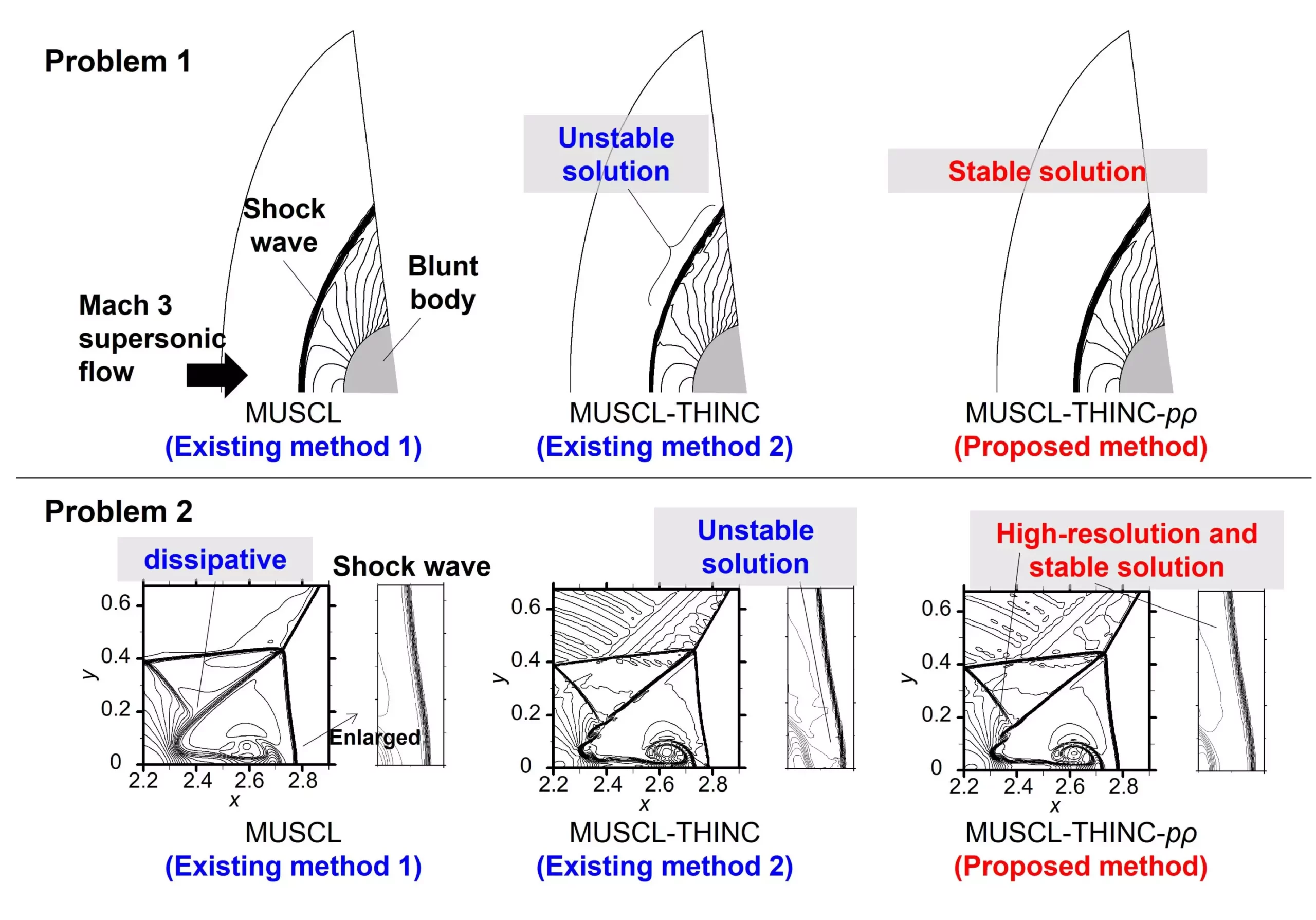In the vast landscape of fluid dynamics, the simulation of compressible flows remains a cornerstone of research and application, crucially impacting engineering fields such as aerospace and mechanical engineering. The critical challenges inherent in this domain stem from the volatile nature of gases, particularly under conditions of substantial density variations. Particularly, the phenomenon of shock waves presents a complex problem, characterized by their unpredictability and abrupt changes. Recent advancements in numerical methods have the potential to bridge existing gaps in accuracy, shedding light on these long-standing challenges.
The Genesis of a Novel Scheme
A groundbreaking approach has emerged from a collaborative team of scientists, who have crafted an innovative hybrid simulation scheme tailored for compressible flow scenarios. Published in the prestigious journal *Physics of Fluids* on April 10, 2024, their research introduces the T-MUSCL methodology, which integrates the well-established Monotonic Upstream-Centered Schemes for Conservation Laws (MUSCL) with a fresh layer of sophistication. The fusion of MUSCL with the Tangential Hyperbolic Interface Capturing (THINC) technique empowers this new scheme, offering a much-needed alternative to traditional methods, especially in situations fraught with nonlinearities and discontinuities.
Dismantling the Limitations of Conventional Methods
While MUSCL has historically served as a robust tool in aerospace engineering, its limitations often surface when simulating complex flows laden with shock waves. The tendency of conventional MUSCL to produce dissipative solutions can significantly fracture the fidelity of simulations. By contrast, the T-MUSCL scheme capitalizes on a refined algorithm designed specifically to address these challenges. It does so by leveraging two critical parameters—the nonlinearity-weighted parameter and the slope-ratio-weighted parameter—which elevate the scheme’s precision, particularly in scenarios previously deemed untenable for traditional approaches.
A Step Forward in Practical Applications
The T-MUSCL scheme does not merely represent a theoretical improvement; it carries substantial implications for real-world engineering problems. By ensuring improved convergence behavior in steady two-dimensional blunt body problems and diminishing unstable numerical behaviors during strong shocks, this hybrid scheme retains the accessibility and simplicity that makes numerical methods widely applicable in engineering contexts. This alignment with practical applications is crucial, as it fosters a connection between advanced scientific research and tangible industrial needs. As articulated by Keiichi Kitamura, associate professor at Yokohama National University, the intention behind the T-MUSCL scheme was straightforward: to create high-resolution, reliable results using uncomplicated expressions that could be easily adopted by engineers and researchers alike.
The Road Ahead: Application in Engineering
As the research team prepares to transition from simulations to practical applications, the potential impact of their work begins to crystallize. Gaku Fukushima, a key researcher in the study, expressed the ambition to advance fluid dynamics comprehension by harnessing their methodology on actual engineering challenges. This forward-looking vision encapsulates the dual intention of expanding theoretical understanding while also accelerating technological progress across sectors—especially those relying on compressible fluid dynamics.
The Broader Implications of T-MUSCL
The implications of the T-MUSCL methodology extend beyond mere computational advancements; they reflect a fundamental shift in how researchers can approach intricate fluid dynamics problems. The hybrid scheme’s prowess in navigating the complexities of nonlinearities introduces a new paradigm for how engineers can model and simulate real-world scenarios with confidence. By effectively managing the dual demands of accuracy and stability, T-MUSCL sets a new benchmark that could redefine simulations across diverse industries.
The Scientific Community’s Reaction
As news of this new methodology spreads through the scientific community, the excitement surrounding its potential applications is palpable. Researchers are now faced with a tool that not only enhances their computational arsenal but also serves as a springboard for further innovations. By marrying simplicity with robustness, T-MUSCL promises to encourage a new wave of explorative studies and applications, motivating researchers to think beyond established norms in fluid dynamics.
Ultimately, the T-MUSCL scheme encapsulates an extraordinary blend of innovative thought and practical application, ushering in a new era in the simulation of compressible flows. By tackling the enduring challenges of shock waves and discontinuities, it empowers engineers and researchers alike to navigate the complexities of fluid dynamics with unprecedented ease and accuracy.


Leave a Reply